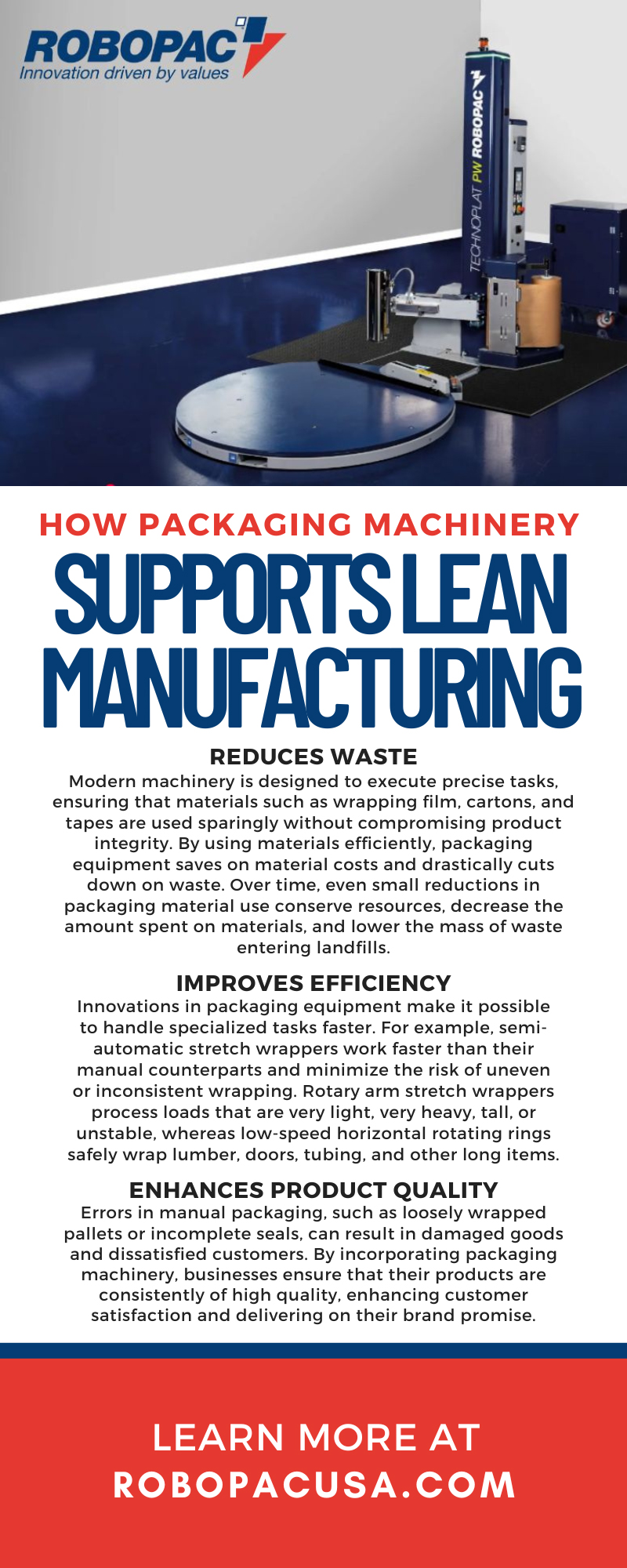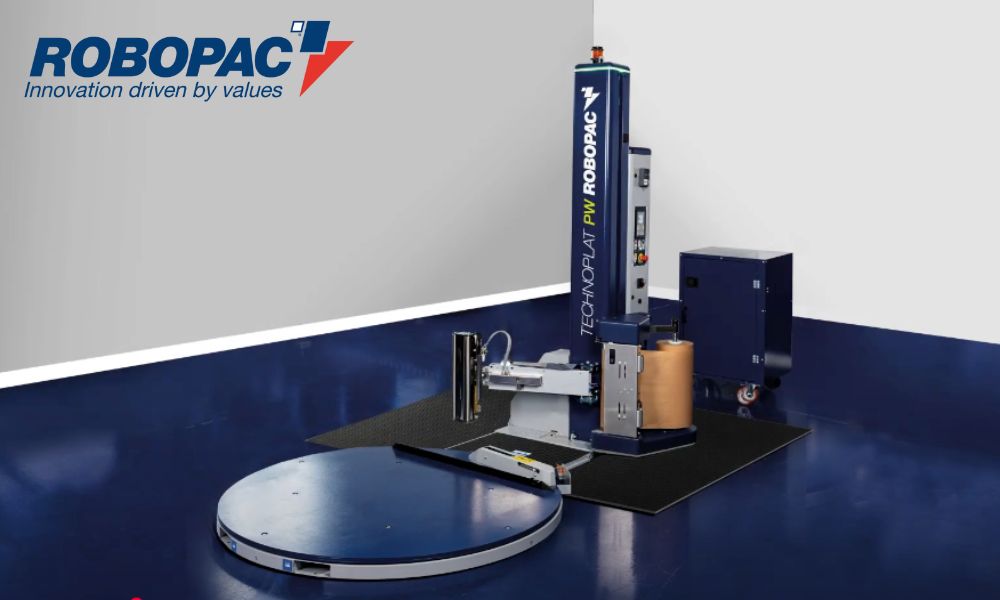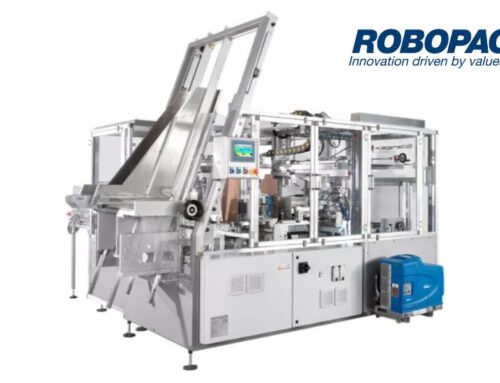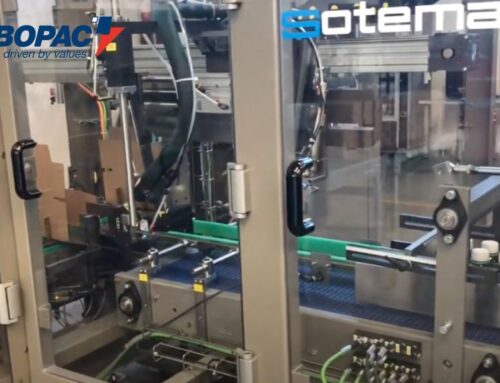Lean manufacturing aims to achieve more with less waste, less downtime, and less resource mismanagement. Packaging machinery plays a crucial role in supporting these principles, transforming the final stages of production for businesses across many industries. Learn how packaging machinery supports lean manufacturing by streamlining and refining processes.
Reduces Waste
Modern machinery is designed to execute precise tasks, ensuring that materials such as wrapping film, cartons, and tapes are used sparingly without compromising product integrity. By using materials efficiently, packaging equipment saves on material costs and drastically cuts down on waste. Over time, even small reductions in packaging material use conserve resources, decrease the amount spent on materials, and lower the mass of waste entering landfills. By investing in efficient packaging machinery, businesses create greener, leaner operations.
Automation significantly minimizes the following mistakes commonly made with manual packaging:
- Excess film: Automated film tension controls ensure only the necessary amount of wrapping film is used, avoiding excess.
- Overuse of cartons: Precision cutting and sizing features reduce the need for oversized or redundant cartons, optimizing material usage.
- Tape waste: Advanced sealing systems apply just the right amount of tape to secure packages, eliminating overapplication.
- Incorrect material application: Smart sensors and robotic alignment prevent errors like misapplied labels or ineffective wraps, making sure materials are used efficiently.
- Scrapped packaging: Consistent automation minimizes defects in packaging, reducing the need to discard poorly prepared materials.
Improves Efficiency
Time is one of the most valuable resources in production, and inefficient packaging processes can result in production delays or bottlenecks. Packaging machinery improves efficiency by automating the repetitive tasks that traditionally require manual input. Whether it’s wrapping pallets or sealing cartons, these machines accelerate production cycles and make sure output stays on schedule.
Innovations in packaging equipment make it possible to handle specialized tasks faster. For example, semi-automatic stretch wrappers work faster than their manual counterparts and minimize the risk of uneven or inconsistent wrapping. Rotary arm stretch wrappers process loads that are very light, very heavy, tall, or unstable, whereas low-speed horizontal rotating rings safely wrap lumber, doors, tubing, and other long items.
Enhances Product Quality
Packaging machinery supports lean manufacturing by maintaining consistent quality, which is vital for meeting customer expectations and keeping products safe during shipping and storage. Automated systems are less prone to human error, whether filling cartons, sealing boxes, or applying perfectly tensioned stretch wrap.
Errors in manual packaging, such as loosely wrapped pallets or incomplete seals, can result in damaged goods and dissatisfied customers. By incorporating packaging machinery, businesses ensure that their products are consistently of high quality, enhancing customer satisfaction and delivering on their brand promise.
Minimizes Downtime
Frequent equipment breakdowns or maintenance interruptions can severely disrupt production schedules. Advanced packaging machinery is typically low-maintenance and built to withstand high-volume operations, minimizing downtime. With reliable machinery, manufacturers can maintain steady production and avoid bottlenecks caused by faulty equipment.
Most modern packaging machines also feature predictive maintenance tools. Sensors detect irregularities and alert operators to potential issues before they cause a breakdown. By proactively tackling maintenance needs, companies can maximize uptime and maintain seamless production.
Increases Safety
Workplace injuries are a significant concern in manual packaging operations, especially for labor-intensive or repetitive tasks. Packaging machinery reduces safety risks by automating these potentially hazardous processes.
Businesses can use packaging machinery to reduce the following workplace injuries commonly associated with manual tasks:
- Strains and sprains caused by repetitive movement or overexertion
- Back injuries from lifting or moving heavy objects
- Cuts and lacerations from handling sharp tools
- Musculoskeletal disorders from awkward postures or prolonged manual operations
- Slip and fall accidents due to improper handling of materials
Additionally, many packaging machines are equipped with safety features to protect the operator and equipment. Automated locking mechanisms prevent the operation of machinery when guards or access panels are not securely closed so that workers cannot inadvertently touch moving parts. Ergonomic designs, such as adjustable controls and loading heights tailored to minimize awkward body movements, reduce strain during repetitive tasks. Furthermore, proximity sensors and light curtains halt operations when unexpected human interaction is detected, effectively preventing potential injuries.
Supports Flexibility
Manufacturers often need to pivot operations to meet varying customer demands or accommodate new product lines. Packaging machinery supports this flexibility by allowing for quick adjustments based on different product sizes, shapes, or types. This adaptability ensures efficient output for both large-scale production runs and more niche, customized orders.
Flexible packaging equipment often leverages quick-changeover technology, allowing operators to switch between product types or sizes in minutes rather than hours. Automated adjustments and modular components streamline recalibration. This reduction in downtime eliminates wasteful delays and enables a more agile response to dynamic market demands.
Improves Workflow Integration
A lean manufacturing system relies on the smooth coordination of all operations, from production to final packaging. Packaging equipment can integrate effortlessly with upstream and downstream systems, improving the overall workflow. For example, conveyor systems and automated labelers work in unison to create a streamlined process that eliminates unnecessary steps.
Integration also opens up opportunities for real-time monitoring of production flow, ensuring that every stage operates harmoniously. By improving workflow integration, packaging machinery helps create a cohesive production environment aligned with lean practices.
Facilitates Data Collection
Data-driven decision-making is at the heart of lean manufacturing. Modern packaging machinery often comes equipped with sensors and data-tracking tools that provide valuable insights into production performance. Metrics such as packaging cycle times, material usage, and machine efficiency can be monitored in real time, allowing manufacturers to identify areas for improvement.
These insights enable businesses to fine-tune their operations and make strategic decisions that optimize efficiency and reduce costs. Personnel may use equipment data to improve resource allocation, optimize processes, schedule maintenance proactively, and maintain rigorous quality control processes. Investing in machinery with advanced data capabilities supports both short-term performance goals and long-term lean manufacturing success.
Lean manufacturing thrives on efficiency, and packaging machinery serves as a standout contributor by cutting waste, streamlining operations, and delivering dependable quality. Packaging equipment adapts to changing requirements, minimizes downtime, and integrates smoothly into workflows, which makes it a powerful tool for creating seamless production systems. Beyond operational improvements, packaging machinery introduces vital safety features and data-driven insights for smarter decision-making. By investing in these technologies, manufacturers can unlock the full potential of lean processes for future-proof operations.








